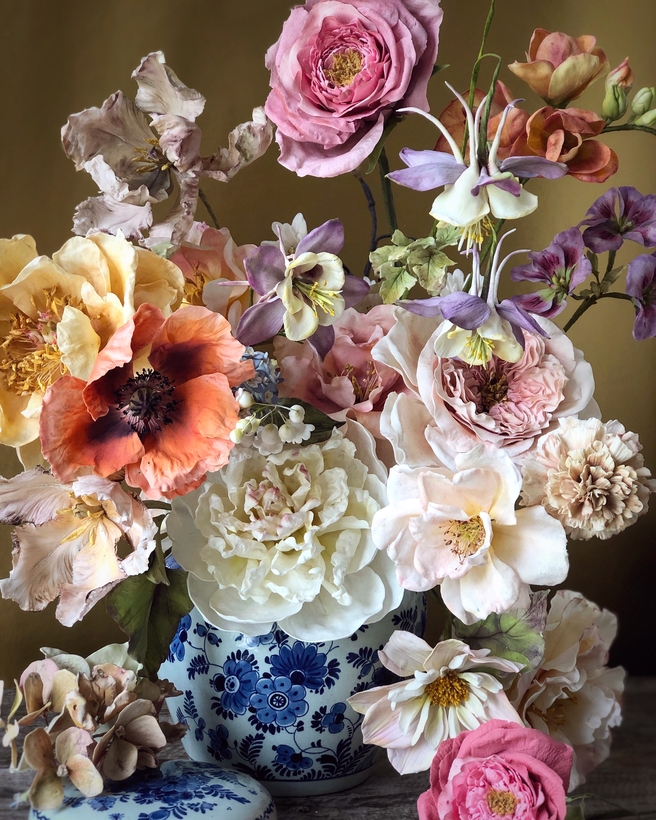It’s not often that a child’s birthday cake will inspire a career change, but that is precisely what happened to Natasja Sadi. Today, from her picturesque studio in Amsterdam, she creates some of the most exquisitely decorated cakes in Europe. Her specialty is the sugar flower, created through a centuries-old technique of molding gum paste into realist flowers that rival those in Dutch masterpieces. With their velvet petals and radiant leaves, each blossom is truly a work of art—albeit one that can be eaten. “Each one is an object to me,” says Sadi, whose blooms cost upward of $1,000. “There’s beauty in something that’s so fragile that you have to enjoy it while you can.”
Originally from Suriname, the small South American country formerly under Dutch rule, Sadi spent the first part of her professional life designing wedding dresses for private clients. But she always loved to bake. Three years ago, she found herself up at four a.m., obsessively embellishing a doll’s gown on that confection that was destined for her daughter. The idea to design cakes with sugar flowers was born. She gave herself more than a year to study flowers and dissect, paint, and bake them.
Inspiration abounded. “In Holland, we live with flowers,” she says. “It’s not necessarily a luxury item. If you’re going to the grocery, you buy your weekly flowers. To me, a house without flowers doesn’t have a soul.”

Sadi starts by purchasing cut flowers at her local weekend market or from vendors who notify her when they discover a rare variety. (She recently got excited when a grower called about a flame tulip that had developed a rare virus, resulting in exceptionally fiery colors.) She then chooses a single blossom to meticulously dissect and replicate in sugar. Sadi prefers to work on flowers that are in season. “It’s with a certain heartbreak that I have to say good-bye to peonies,” she says. A simple garden rose with five petals takes her two hours to complete. A dahlia can require two days.
Sometimes, when she’s particularly taken with a bloom, Sadi will watch as it slowly dies over a period of days to find just the right moment to capture the process. For her, creating sugar flowers is a way to prolong nature’s fleeting beauty. “Each flower has its own dynamic features, smell, color,” she says. “Whether they’re in their bud trying to unfold and reveal themselves, at the top of their peak and fully blown, or starting to decay. Asking me to reveal my favorite flower is like asking me which of my children is my favorite.”
Whitney Vargas is a writer living in New York

